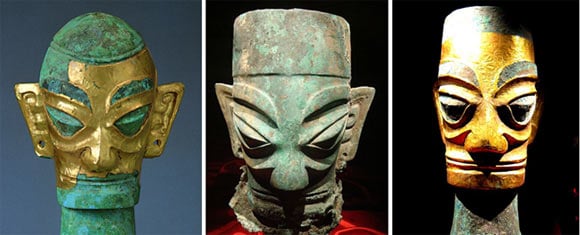0















| Thumbs Up |
| Received: 111 Given: 132 |

Okunevo-figurine (2,500bc altai)
http://www.theapricity.com/forum/sho...ogical-Complex
Hongshan jade in Manchu 5,000bc
shu culture(2,000bc) in sichuan of China
However, by far the most striking findings were dozens of large bronze masks and heads represented with angular human features, exaggerated almond-shaped eyes, straight noses, square faces, and huge ears, features which don’t reflect those of Asian people.
The artifacts were radiocarbon dated to the 12 th-11th centuries BC. They had been created using remarkably advanced bronze casting technology, which was acquired by adding lead to a combination of copper and tin, creating a stronger substance that could create substantially larger and heavier objects, such as the life-size human statue and the 4-metre tall tree.
The spectacular discovery at Sanxingdui in 1986 turned Sichuan into a focal point in the study of ancient China. The ancient artifacts found in the two pits date to the time of the Shang dynasty, in the late second millennium BC, when the primary civilised society was flourishing in the Yellow River valley, in north China, thousands of miles from Sichuan. No similar find has been made anywhere else, and there are no inscriptions at the Sanxingdui site to shed light on its culture, which was apparently a distinctive Bronze Age civilisation, unrecorded in historical texts and previously unknown. The discovery contributed to a fundamental shift from the traditional understanding of a single centre of civilisation in north China to the recognition of the existence of multiple regional traditions, of which Sichuan was clearly one of the most distinct.
The culture that produced these artifacts is now known as the Sanxingdui Culture, and archaeologists are identifying it with the ancient kingdom of Shu, linking the artifacts found at the site to its early legendary kings. References to a Shu kingdom that can be reliably dated to such an early period in Chinese historical records are scant (it is mentioned in Shiji and Shujing as an ally of the Zhou who defeated the Shang), but accounts of the legendary kings of Shu may be found in local annals.
Last edited by johen; 02-07-2017 at 08:52 PM.
There are currently 1 users browsing this thread. (0 members and 1 guests)
 Armenia
Armenia
 Latin America
Latin America
Bookmarks